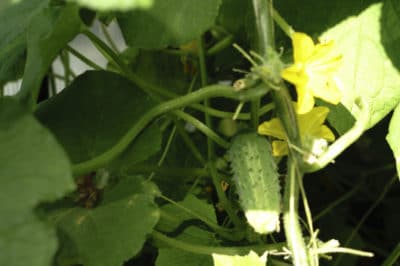An Inherited Trait
Not all cucumber prickles are alike. Just as they inherit size, shape, color and flavor, every cuke variety inherits its prickles. They’re Mother Nature’s way of protecting the plants from insects or hungry animals. Many modern cukes are bred for minimal prickling; English hothouse cukes have almost none. Most picking cukes, however, are naturally covered with white or black spines.
Handling Prickly Cukes
If your cukes are no more prickly than kiwi fruit, pick and process them bare-handed. Handling spiny cukes is more of a challenge. Approach them with a sturdy pair of gardening gloves that you keep on until you’ve safely transported them to the kitchen.
Scraping Prickly Cukes
Scraping the prickles from slicing cukes rarely involves more than holding them under running water and rubbing them clean with your bare hands. Pickling cuke spines can be a bit more stubborn. To avoid painfully stuck fingers, wrap the cuke in a kitchen towel and rub it vigorously. Then shake the towel’s contents into your disposal or trash.
Expert gardener’s tip: In case you were wondering, those smooth-skinned, gleaming produce-department cukes all undergo scraping (followed by a wax job) before going on public display.
Smooth-Skinned Cukes
If you’d prefer to scrap the scraping, planting these nearly smooth-skinned cuke cultivars is the way to go:
- ‘Tsuyataro’ is a mildew-resistant cultivar and best-seller in Japan. Start harvesting its crisp, burpless 8-inch slicing cukes in about 57 days.
- ‘La Diva,’ made for trellising. The 6-foot vine yields loads of cigar-sized cukes from mid-summer into mid-fall. They’re juicy, crisp and great for pickling or slicing.
- ‘Amiga,’ bred to resist cucumber mosaic virus, papaya ringspot virus and powdery mildew. Its deep-green, flavorful snack-sized cukes are ready for picking in 55 days.
Expert gardener’s tip: All cucumber cultivars bred for smooth, thin skins require gentle handling during harvesting. Otherwise, they may scratch and scar.
